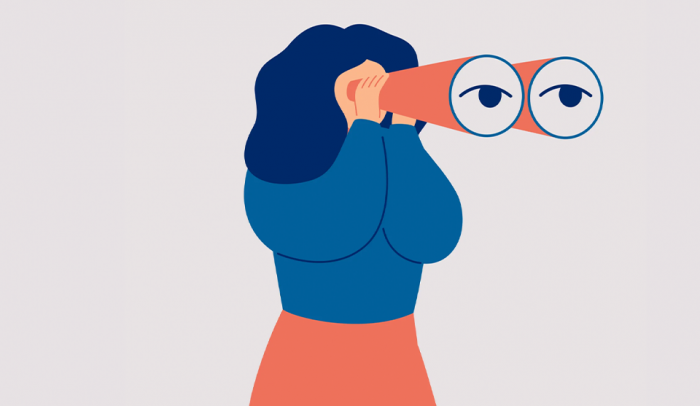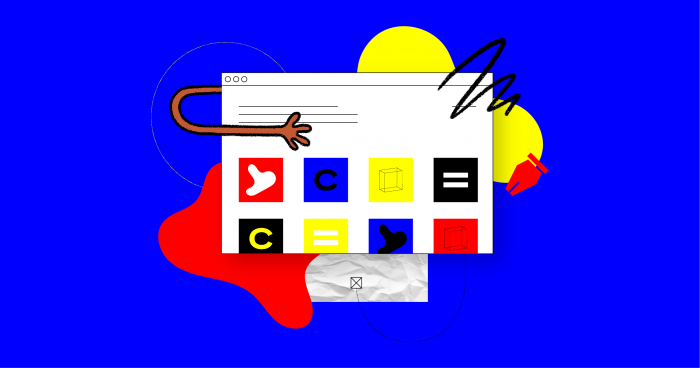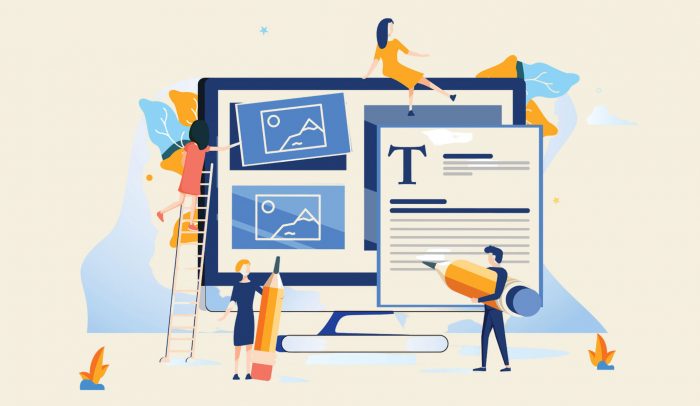Design teams are growing fast, and so are the operational systems that manage them. We’re living in a design-first world, and that means that graphic design matters more than ever. Of course, that also means that graphic designers are busier than ever.
But a new scale requires a new structure—it doesn’t make sense to bog designers down with work that distracts from actual design. That’s what designers are best at, after all. Smart companies are recognizing this problem, empowering their designers and allowing them to work more effectively.
How? DesignOps.
What is DesignOps?
DesignOps is the umbrella term for creating effective workflows that help teams build digital products. It’s the operational management of designers and the optimization of design processes in order to maximize the value of design. Meredith Black, a DesignOps pioneer, has a more basic definition: “I like to say that DesignOps is everything but actual design,” she quips.
Usually, the organizations that implement DesignOps are large tech companies, but they don’t have to be. DesignOps is loosely based on the successful model of DevOps—the agile, iterative practice that combines software development (Dev) and IT operations (Ops) to enable continuous product deployment.
“Keep designers focused on the work, and let DesignOps help with the rest,” says Black, who is a former DesignOps lead at Pinterest and currently serves as a consultant in the space. “Whether that’s strategy, taking notes, coordinating with cross-functional teams, helping ensure a successful launch of a project, building a learning and development program, or just being there to listen to a designer’s needs.”
Once you start trying to describe how DesignOps actually works, though, a simple definition becomes harder to pin down. This is partly because it’s a somewhat new discipline—although agencies always had account and project managers, organizations only started trying to create DesignOps roles in the early 2010s. But also, DesignOps is meant to be everything. It connects across teams, across processes, across products; it is a set of practices and a role, as well as a mindset.
The Nielsen Norman Group organizes their “DesignOps menu”—in other words, what people in DesignOps roles do—into three broad categories: “How we work together,” “How we get our work done,” and “How our work creates impact.” And within those umbrella categories, the topics that DesignOps can touch upon get more refined. Black explains that the reason for such a large “menu” of options is that it all comes down to what a company needs.
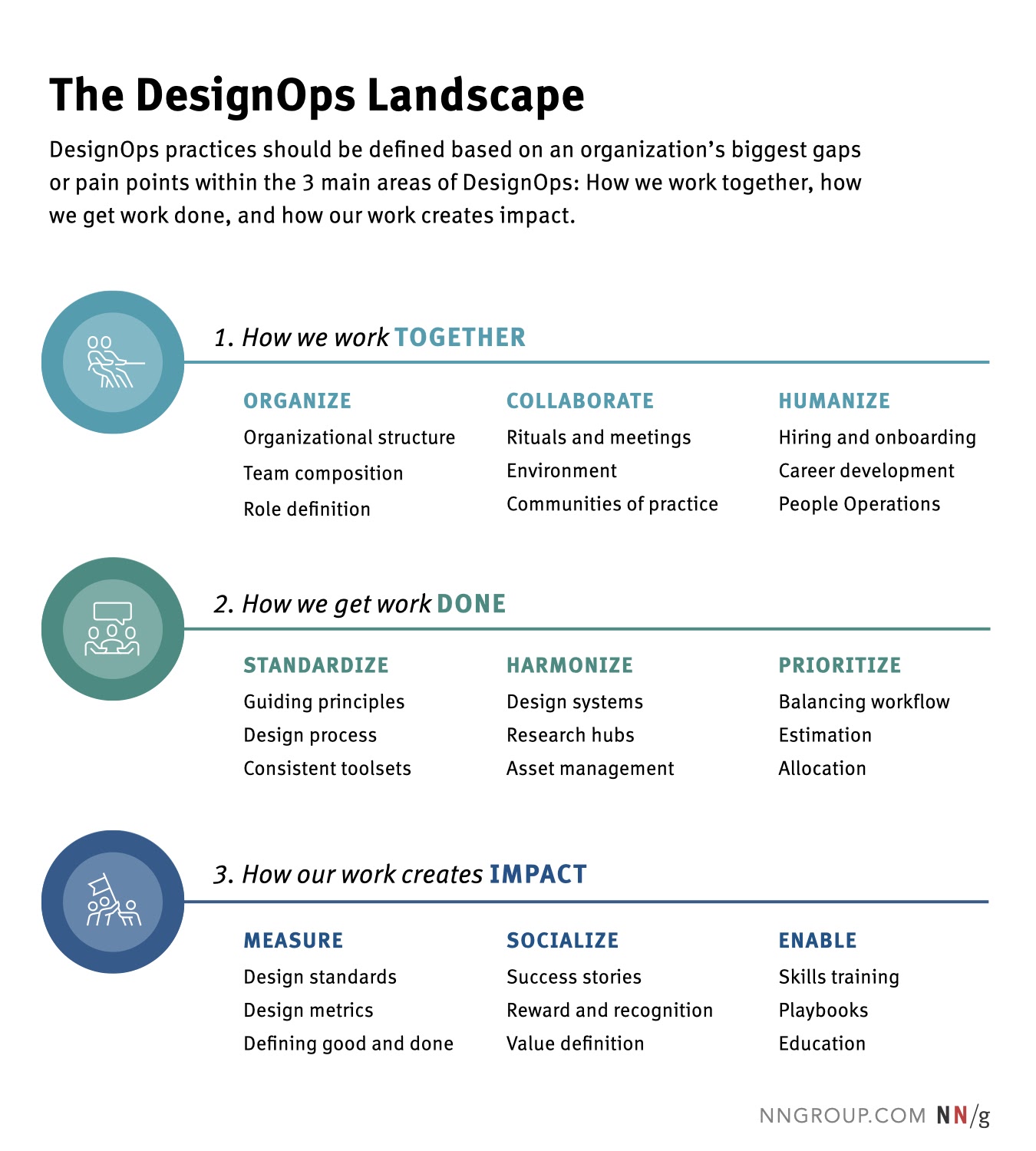
“Currently, lots of people think it’s a one-size-fits-all role,” Black says, “When really the role is going to vary based on the company’s needs. One company might need someone to run actual projects, project timelines, budgets, and take notes—while another company might need DesignOps folks to run larger programs focused on onboarding, learning and development, or supporting at an executive level, and really being a chief-of-staff to the head of design.”
This is partially why every company seems to take a slightly different approach. IBM has a primer to show ideas and org charts for how to scale DesignOps teams. Atlassian shared their workflows to incorporate design understanding and feedback in an agile-like process. So did Getty Images, Airbnb, Pinterest, and Salesforce. While they’re all slightly different, they all share the three-tiered approach that NN Group laid out: There’s the work done on the product, the work done on the team, and then an awareness of the culture of design.
The tripartite structure is also by design. As Dave Malouf, a DesignOps leader at Northwestern Mutual, explained in the 2019 DesignOps Handbook that he co-wrote with Black, Collin Whitehead (DropBox), Kate Battles (FitBit), and Gregg Bernstein, you can trace the DesignOps menu back to DevOps, Lean Startup, and two-track agile.
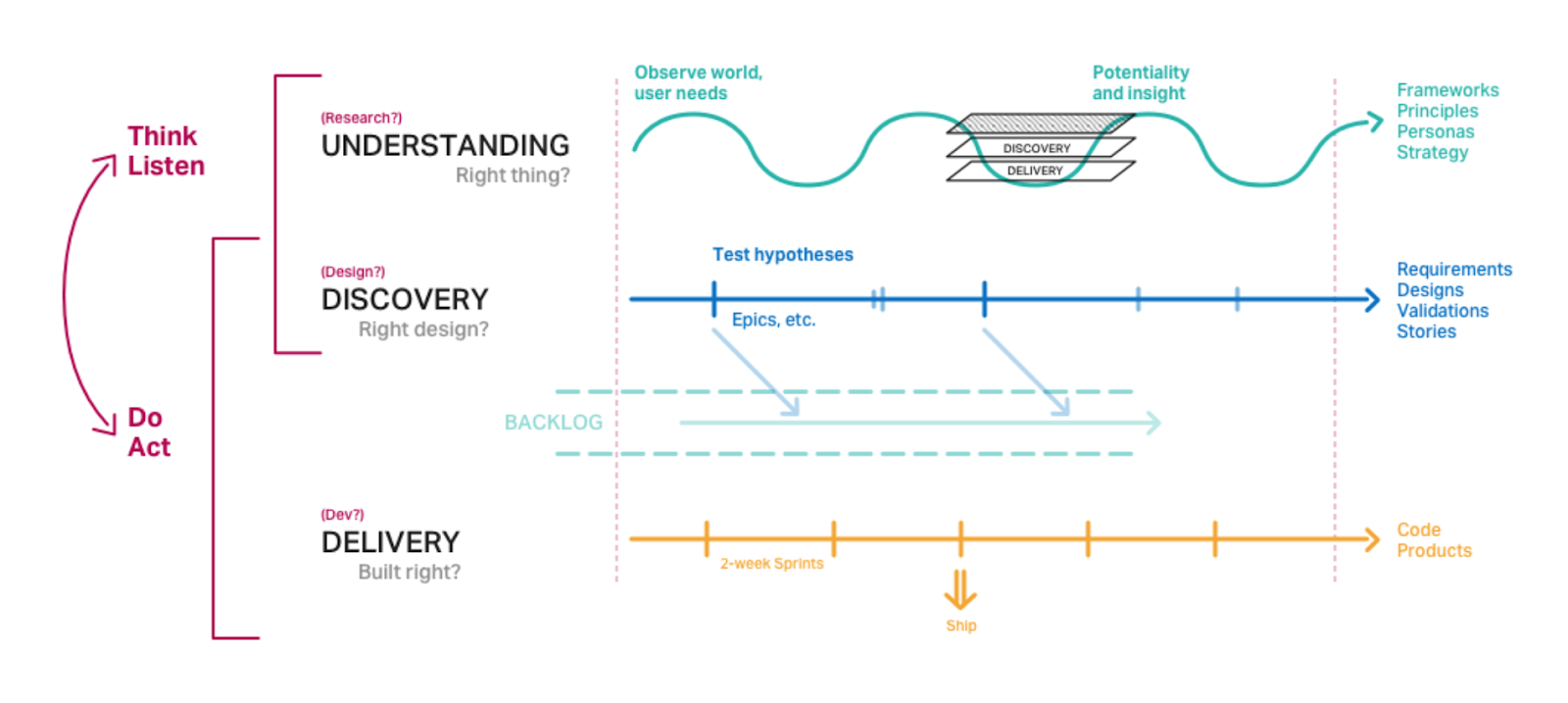
As Malouf writes in the handbook, the historical difficulties of designers working with developers is that “developers and product managers measured success by whether a product shipped on time, and not whether the design satisfied user needs.” Tri-track systems solved these problems by adding a “discovery” track, a way to learn from mistakes and test experiments, and an “understanding” track, which considers the efficacy of the product and the efficiency of the team—“whether it’s the “the ‘right’ thing based on user needs and team insights.”
How to actually make it work
Black remembers what it was like at the beginning. Seemingly simultaneously, designers across the industry grappled with the same issues of how to efficiently scale teams—and the solution of DesignOps seemed to catch on and spread. She was working at the agency Hot Studio on their Facebook account: “When I was interacting with Facebook execs, they realized they needed a role similar to the one I had,” she said. Courtney Kaplan, Black’s boss at the time, built the entire DesignOps team from the ground up at Facebook—when Black went on to do the same thing at Pinterest, she considered Kaplan as a mentor. “There were very few of us in the industry who had this unique role and we were all figuring out how to roll something like this out on a larger scale,” Black said.
And according to the numbers, everyone is still figuring it out. In June 2020, the UX researchers of NN Group surveyed 557 design and UX practitioners and organizations to learn more about their DesignOps efforts. The survey went out to organizations and professionals across industries, and the questions were centrally focused on the presence and efficacy of DesignOps across the organization. The researchers found that on average, design professionals ticked off just 7.5 of the 34 total items at their organization, about 22%:
How we work together: 18% (2.2 items of 12)
How we get our work done: 20% (2.2 items of 11)
How our work creates impact: 30% (3.2 items of 11)
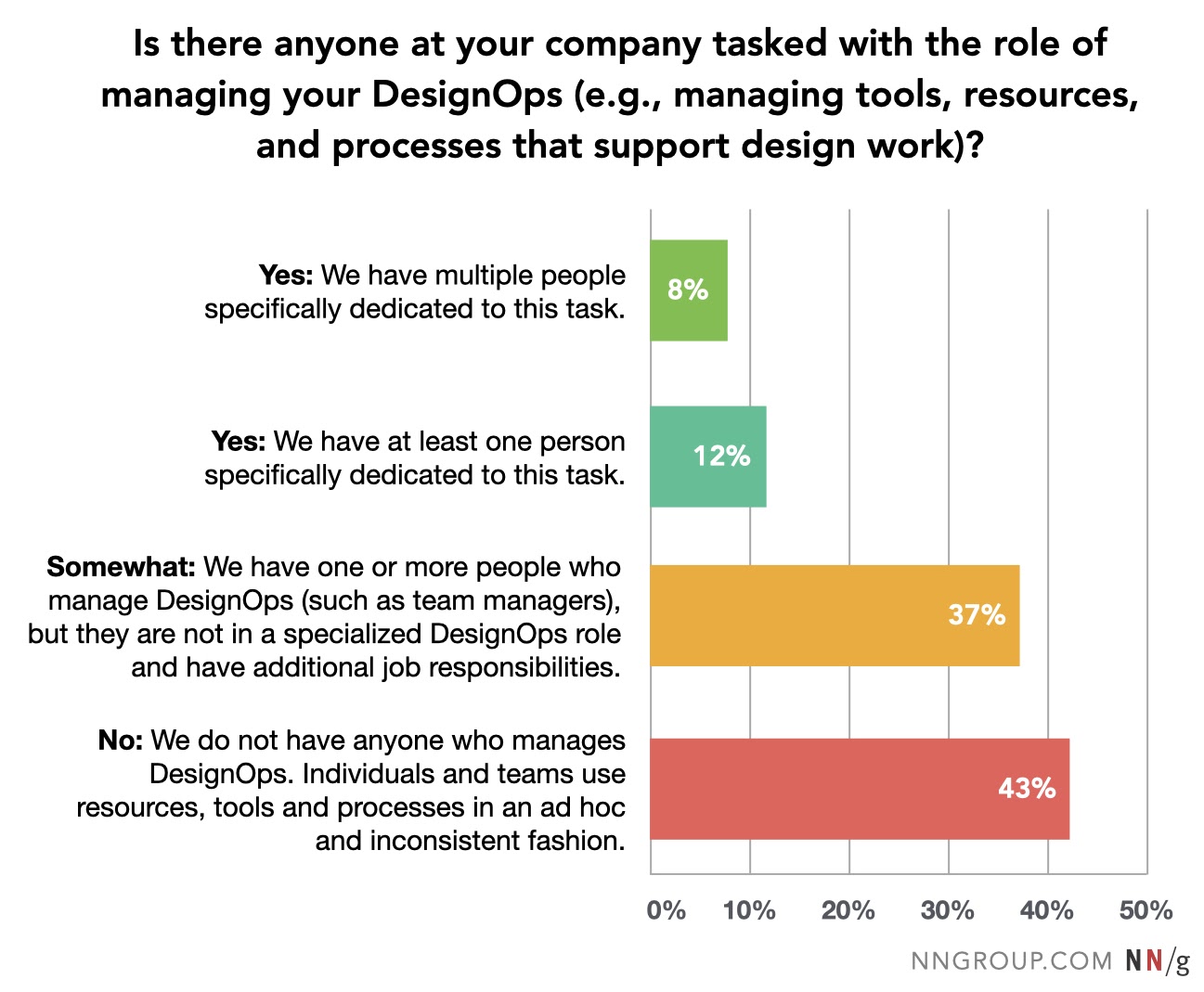
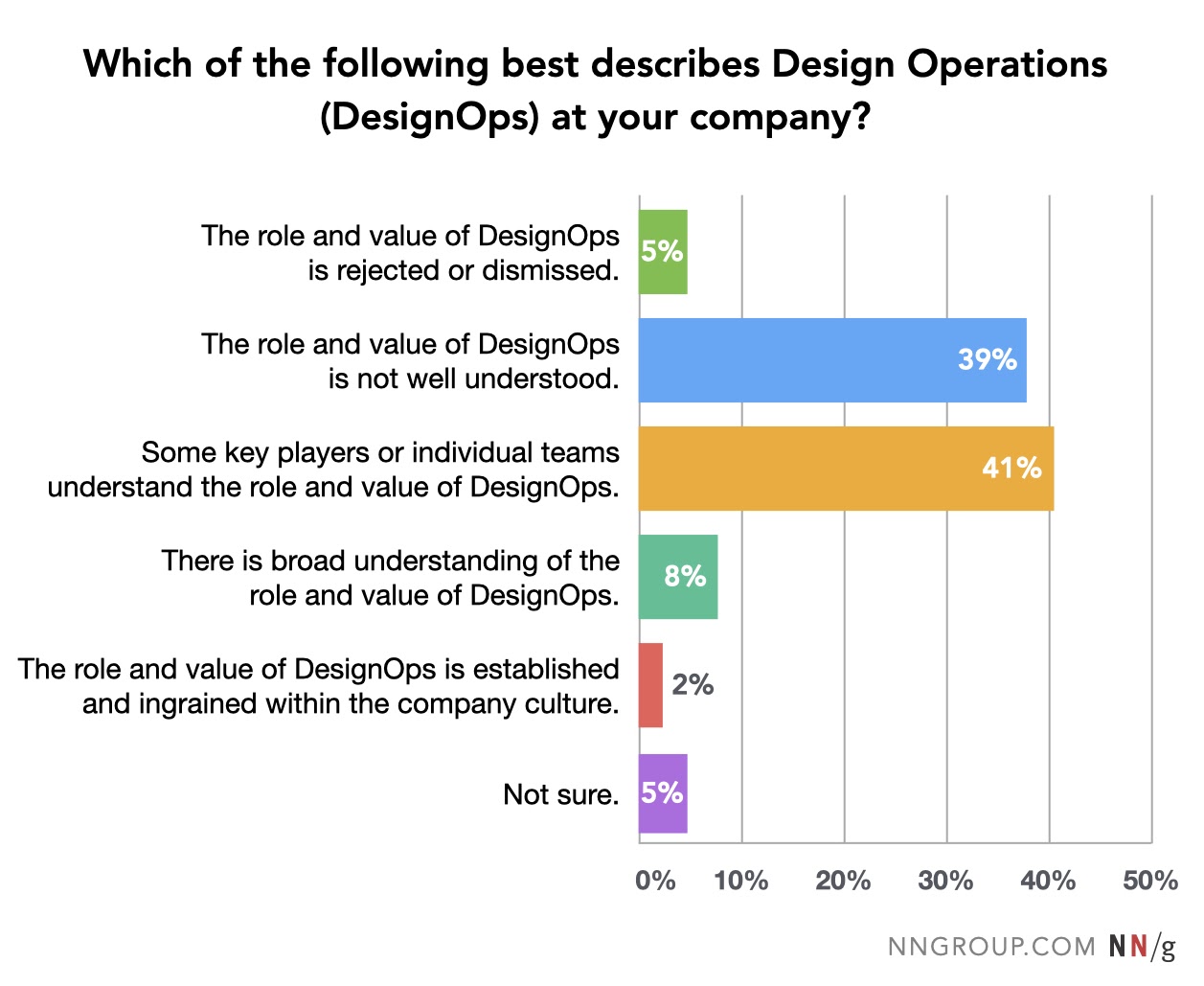
The numbers were low, no matter the question. This might be explained by the fact that only 8% of 557 respondents reported working at organizations within which someone had a dedicated DesignOps role.
So, how can design teams adopt DesignOps? By following Black’s example, and starting slow.
“Honestly, I think the role right now is just so new,” Black says. “It’s a very ‘hot’ role and companies all around the world are hiring DesignOps folks and trying to figure out what ‘DesignOps’ really is.”
When Black started at Pinterest, she was the first producer they ever had. She had left Facebook to join the Pinterest team because she wanted to work someplace smaller, to help them grow. At the time, Pinterest was only 400 people—and Black was working with a team of 10 designers. (Yes, that small—and DesignOps can work with teams that are even smaller.)
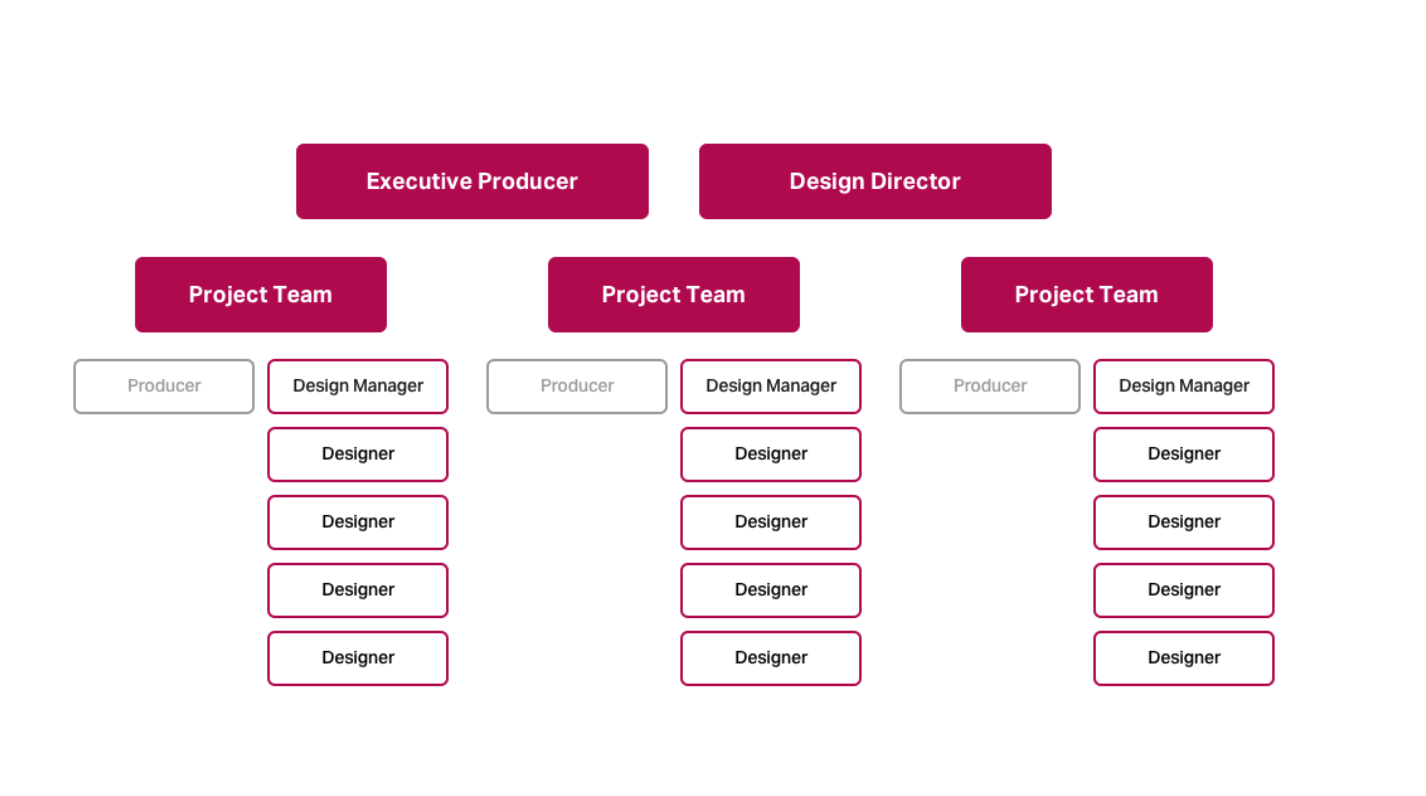
And because she was working someplace that didn’t have a DesignOps structure, she had to start by taking on one project at a time, and figure out the right organizational workflow as she went along.
But, as Black stresses, the strength of DesignOps producers is that they aren’t outside of the design process—they are embedded within it, and are supporting designers, first and foremost. “The people in this role are not admins, they are not note-takers,” Black says. “They have a passion for design and while they may not be designing themselves, they sure can articulate what works and what doesn’t, and that can be incredibly helpful.”
How else can DesignOps help?
Part of taking things off of designers’ plates also means clearing the air. 2020 was a tumultuous year—and because more people are working from home than ever before, a lot of the boundaries that used to exist between work and life are no longer there. More and more companies are looking to management to help mitigate the ways that our daily lives interact with our work lives.
Ahead of the DesignOps Summit of 2020, the UX designer Kat Vellos went on the Rosenfeld Review Podcast to talk about her research on the epidemic of loneliness in the design industry. Vellos argued that managers, especially those in DesignOps, needed to start breaking taboos and making themselves responsible for the workplace loneliness of their employees. “A sense of belonging really needs to come from the management level,” Vellos said. “Whether they care about it from the heart level or the wallet, it needs to be a priority.”
The designer Vincent Brathwaite also visited the podcast ahead of his talk at the Summit to talk about the specific function that DesignOps can perform to help close the racial divide on design teams. Brathwaite believes that difficult conversations about race can be started and ultimately made more productive by generating new design-based protocols around having them.
For Brathwaite, encouraging teams to have difficult conversations can be achieved by setting new social norms around openness, and defining terms and language. “One of the things we have to do as design leaders is be open to having conversations and being wrong,” Brathwaite said. “Setting the stage and creating the protocol where [someone can say], ‘Hey I may not know all the terms, but I’m open to correcting myself or to using the right ones.’ Really it just boils down to being willing to exchange with another human being.”
These small shifts, Brathwaite explained, have the potential to bridge racials divides and also set new norms across teams. “My hope is that designers and design leaders can become more curious about the way that our industry is set up,” Brathwaite said.
At its core, DesignOps is about curiosity and openness about how the industry can change — and that producers can help lead changes to the design process. As Black explains, the best people suited for DesignOps are the ones that are “open and curious” to whatever it is that a company really needs.
“I think that people who take on this role are very much the unsung heroes,” Black says. “One of the best quotes I ever heard from a product manager was, ‘I don’t know exactly what you do, but I would be lost without you.’”
